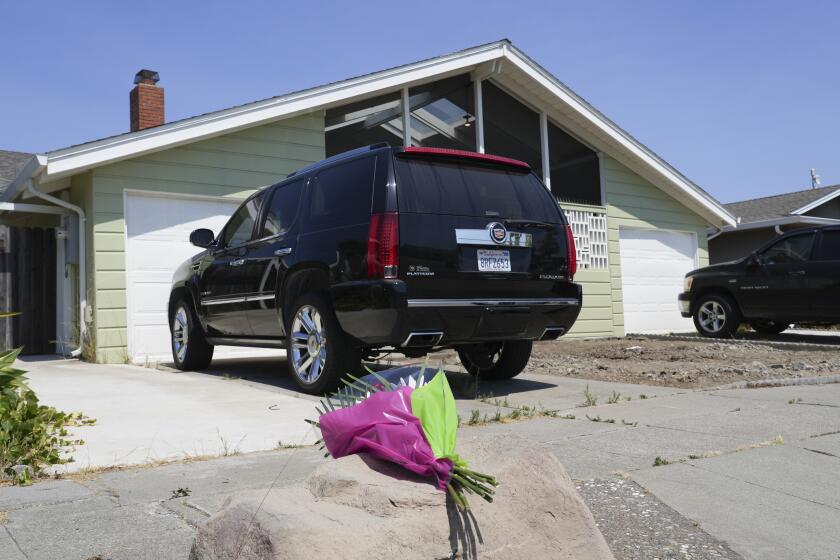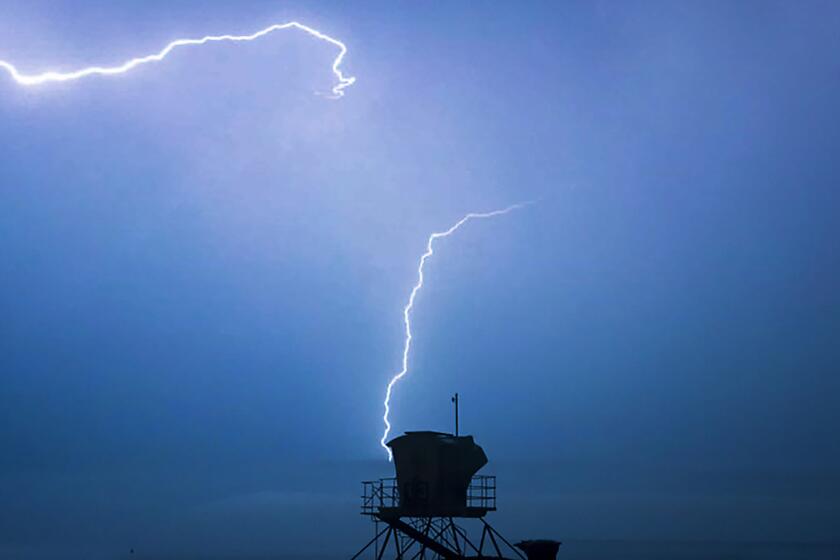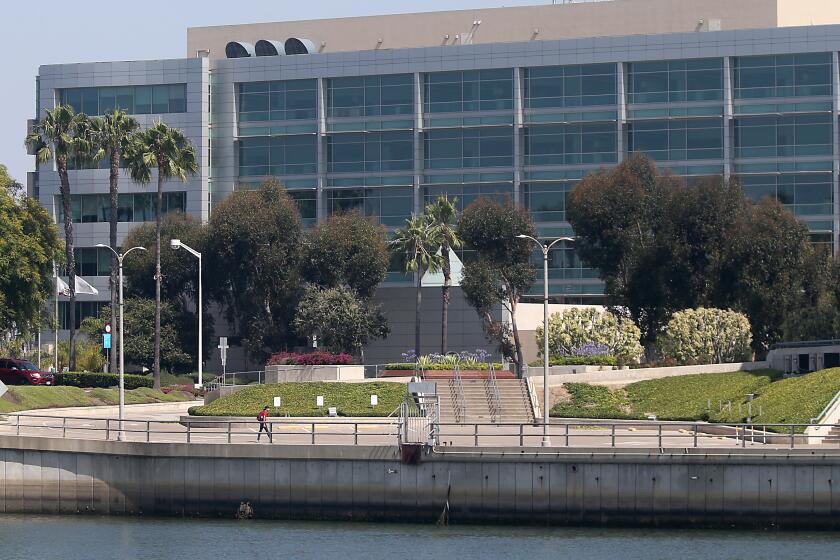California Politics: Waiting for the Voter’s Choice Act reports

The two-year anniversary of California’s 2020 statewide primary is less than three months away, an election that feels like a lifetime ago for voters and politics watchers.
But with another campaign cycle just around the corner, a valuable body of research into the successes and shortcomings of a sweeping California election law — used by counties that are home to more than half of the state’s voters — remains in limbo.
The research was compiled by three groups of election experts but remains under wraps by Secretary of State Shirley Weber. At this point, it’s unlikely to be published in time to offer any guidance on improving elections in 2022.
‘Within six months’
The enactment of the Voter’s Choice Act in 2016 set in motion a lot of what the COVID-19 pandemic later made common in California elections: an emphasis on voting by mail, a shift from traditional neighborhood polling places to regional “vote centers” that provide other election services such as last-minute registration and new opportunities for in-person voting before election day.
A handful of California counties were allowed to implement the law in 2018, and additional counties, including Los Angeles, were given the green light in 2020.
The law requires a postelection analysis with findings reported by the secretary of state to the Legislature “within six months of each election,” a provision supporters said at the time would be crucial in making sure the law really worked.
The law, signed by then-Gov. Jerry Brown, requires the secretary of state to report on experiences such as how many voters participated in person or used ballot drop-off sites, how many ballots were rejected and whether there were any instances of voter fraud. The data must be sorted by race and ethnicity and to track the experiences of voters with disabilities.
Records request denied
The reports for 2020 were commissioned by then-Secretary of State Alex Padilla under contracts totaling $398,000 with three research groups that have significant expertise in voting and election issues.
Members of a task force established by Padilla believed the five reports covering the March 3, 2020, primary were complete, according to people familiar with the group’s work but who were not authorized to speak on its behalf. Nor, they said, were there any indications after Weber took office of a problem with five additional reports analyzing the Voter’s Choice Act in last November’s election.
On Oct. 29, The Times filed a California Public Records Act request seeking a copy of the 2020 election reports. On Monday, Weber’s office rejected that request, saying the analysis isn’t complete.
“Publishing partial research prior to the compilation and publication of the final reports usurps the purpose of the research and undermines the Secretary of State’s responsibilities for review, analysis and addressing the statutory requirements for the reports,” wrote the secretary’s office of constituent affairs.
Impacts on communities of color
Joe Kocurek, the deputy secretary of state for communications, said Thursday that the 2020 reports on the implementation of the Voter’s Choice Act will be sent to the Legislature “in the early part of the first quarter” of next year.
“We looked at the data analyses with fresh eyes and saw an opportunity for pursuing additional data to more fully fulfill the requirements of the legislation and to provide a product that was more complete, inclusive and useful to the Legislature and public,” Kocurek said in an email.
Weber’s office awarded a new contract to UCLA researchers for $65,000, apparently hoping to augment the information in the original reports on voting patterns by race and ethnicity.
“For example, how did the rapid change to universal vote-by-mail impact Black communities in 2020?” the UCLA project summary asks in a copy of the contract provided by state officials. “The objective of this project and purpose is to provide the Secretary of State with a more inclusive approach to accurately estimating the race or ethnicity of all Californians on the voter registry.”
Too late for 2022?
While those are important questions, the answers probably won’t arrive in time to help local officials in the 15 counties that have already embraced the election law — or those thinking about it.
“It’s disappointing not to have reports published,” said Cathy Darling Allen, registrar of voters in Shasta County. “The data in those potential reports would really be helpful in informing decision-making about adopting [the Voter’s Choice Act] in this cycle.”
It’s also worth noting that the counties choosing to conduct elections under the Voter’s Choice Act didn’t get any extra time of their own in following the provisions of the law. Local officials were required to submit an “election administration plan” for 2022 and have done so with approval by state officials, but without any of the research into how the plans from the last election actually worked for voters.
Enjoying this newsletter? Consider subscribing to the Los Angeles Times
Your support helps us deliver the news that matters most. Become a subscriber.
Assembly members, pack your bags
The California Citizens’ Redistricting Commission continues to draw, and redraw, the maps for the state’s congressional and legislative districts. And it was Monday’s revisions to the map for California’s Assembly districts that drew the attention of a number of political observers and, perhaps, real estate agents.
The homes of 22 incumbent Assembly members — more than 1 in 4 members of the lower house — have been drawn into proposed districts with one or more of their colleagues.
Under the California Constitution, “the place of residence of any incumbent or political candidate shall not be considered in the creation of a map” drawn by the independent commission, so no one really knew this was happening until outside experts reviewed the proposal in the early hours of Tuesday.
Here’s the list of overcrowded districts, according to an analysis provided by the for-profit firm Redistricting Partners.
- Assembly district drawn from Calaveras County southward toward the outskirts of Fresno and down to Inyo County: Frank Bigelow (R) and Jim Patterson (R)
- Assembly district that runs from San Francisco south into San Mateo County: Phil Ting (D) and Kevin Mullin (D)
- Assembly district comprising much of the San Francisco peninsula south to Saratoga in Santa Clara County: Evan Low (D) and Marc Berman (D)
- Assembly district that runs from Glendale down to East Los Angeles: Miguel Santiago (D) and Christina Garcia (D)
- Assembly district running from Encino to Burbank: Jesse Gabriel (D), Adrin Nazarian (D) and Luz Rivas (D)
- Assembly district stretching across the vast area from Palmdale to the Arizona border and south to Twentynine Palms: Thurston Smith (R) and Tom Lackey (R)
- Assembly district from Corona east to Riverside: Jose Medina (D), Sabrina Cervantes (D) and Eloise Gómez Reyes (D)
- Assembly district stretching along the Orange County coast from Seal Beach to just past Laguna Beach: Cottie Petrie-Norris (D) and Janet Nguyen (R)
- Assembly district encompassing much of inland San Diego County: Marie Waldron (R) and Randy Voepel (R)
- Assembly district including East San Diego and La Presa: Lorena Gonzalez (D) and Akilah Weber (D)
Not all of these moves will result in head-to-head contests next year. Mullin, for example, has announced he will seek the congressional seat of Democratic Rep. Jackie Speier, who is retiring. Others are likely to pack their bags and move, though that can present tough choices between the demands of family and the reality of politics.
Also notable: Fourteen of the new Assembly districts, as currently proposed, have no incumbent living within their borders.
California politics lightning round
— Rep. Devin Nunes, a controversial San Joaquin Valley Republican and ardent supporter of Donald Trump, is leaving Congress by the end of the month to head a social media company created by the former president.
— The Los Angeles City Council voted Tuesday to finalize its new set of district maps for the next 10 years, bringing a quiet end to a frequently contentious redistricting process.
— California regulators voted on Thursday to ban the sale of new gas-powered leaf blowers and lawnmowers starting in 2024 and portable generators by 2028.
— The state’s new reparations task force faces a monumental challenge: crafting a proposal that earns the support of Black Californians, who have pushed for justice for centuries, and a majority of California lawmakers, whose constituents might not fully understand the need for atonement.
— The Senate Foreign Relations Committee is set to consider Los Angeles Mayor Eric Garcetti’s nomination to be ambassador to India at a hearing Tuesday.
— Gov. Gavin Newsom has struggled with dyslexia since elementary school. Now he’s telling his story through Ben, the baseball-loving protagonist of his new children’s book who has a tough time reading too.
Stay in touch
Did someone forward you this? Sign up here to get California Politics in your inbox.
Until next time, send your comments, suggestions and news tips to politics@latimes.com.
Start your day right
Sign up for Essential California for news, features and recommendations from the L.A. Times and beyond in your inbox six days a week.
You may occasionally receive promotional content from the Los Angeles Times.




